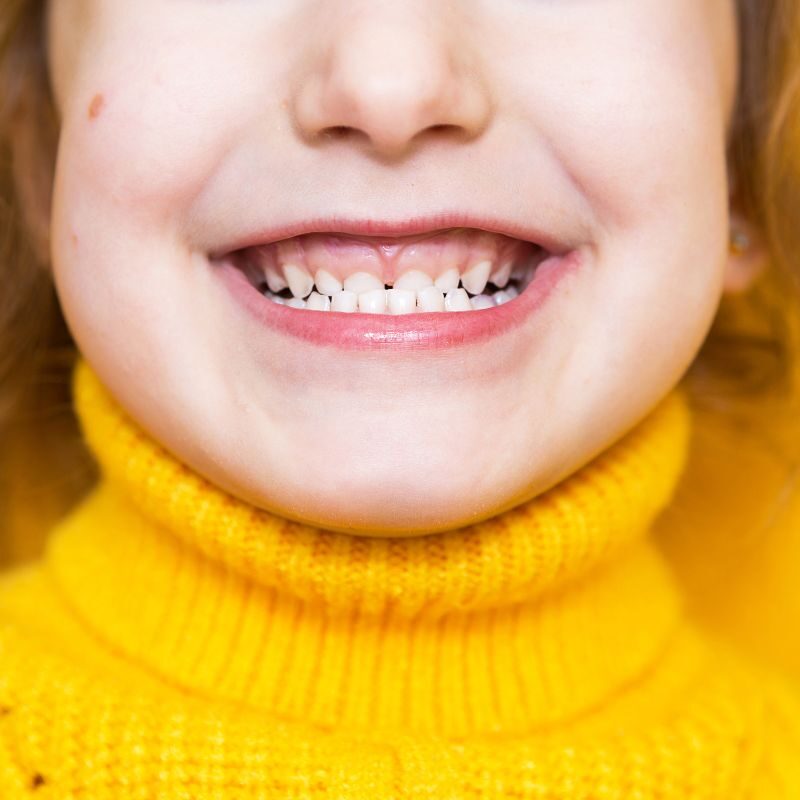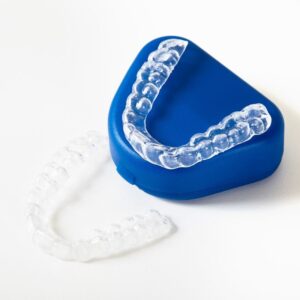Many people notice that their bite feels “off,” but they aren’t sure what’s causing it. Two of the most common bite problems are overbites and underbites. While both conditions can affect appearance, comfort, and oral health, the treatments are different. At Chacon Orthodontics in Westchase and Brandon, FL, we specialize in identifying and treating overbite vs underbite issues to help patients achieve confident, healthy smiles.
In this article, we’ll explain the differences between an overbite vs underbite, what causes them, potential health concerns, and how Dr. Omar Chacon and his team can help you or your child with personalized orthodontic care.
What Is an Overbite vs Underbite?
Both overbites and underbites involve misalignment of the upper and lower teeth, but they appear very differently. Understanding which one you have is the first step to finding the right treatment.
Defining an Overbite
An overbite occurs when the upper front teeth overlap the lower front teeth excessively. While a small overbite is normal, a deep overbite can cause uneven wear on teeth, jaw discomfort, and difficulty biting into certain foods. Many patients also notice their smile looks “gummy” or their chin appears less defined.
Defining an Underbite
An underbite is the opposite problem. The lower front teeth extend past the upper front teeth, creating a protruding jaw appearance. This can make chewing difficult, affect speech, and place extra strain on the jaw. Children with untreated underbites may also experience self-consciousness about their smile early on.
Key Differences Between Overbite vs Underbite
The main difference is the direction of misalignment. An overbite pushes the upper teeth forward, while an underbite pushes the lower teeth forward. Both conditions affect function and appearance, but treatment approaches vary depending on severity and age of the patient.
What Causes Overbites and Underbites?
Bite issues don’t develop overnight. They are usually influenced by genetics, habits, or structural changes in the jaw.
Genetics and Jaw Development
Often, overbites and underbites run in families. Jaw size and growth patterns are inherited, which can create space or alignment problems as teeth develop. If parents or siblings have had bite issues, children may be more likely to experience them too.
Habits and Childhood Behaviors
Certain habits can contribute to bite misalignments. Thumb sucking, prolonged pacifier use, or tongue thrusting during early childhood can affect jaw growth and tooth positioning. Early intervention can help minimize these issues before they worsen.
Injury or Structural Issues
Trauma to the jaw or poorly fitted dental restorations may also lead to bite problems. When teeth don’t fit together properly after an accident or dental work, it can gradually shift the bite into an overbite or underbite position.
Health Problems Linked to Overbite vs Underbite
Leaving bite problems untreated can lead to more than cosmetic concerns. Over time, they can affect overall dental health, comfort, and confidence.
Dental Health Concerns
Bite misalignments can cause uneven wear on enamel, making teeth more vulnerable to cavities, chipping, and gum disease. Patients may also find it harder to clean their teeth properly, which increases the risk of oral health problems.
Jaw and Facial Pain
Overbites and underbites often strain the jaw joints, leading to TMJ discomfort, headaches, and even neck or shoulder tension. Patients sometimes notice popping or clicking sounds when they open their mouth.
Self-Confidence and Appearance
Because bite problems affect the way the teeth and jaw look, many patients feel self-conscious about their smile. Some may avoid photos or smiling in public, which can impact confidence and social interactions. Speech difficulties, such as lisping, are also more common.
How Orthodontists Treat Overbite vs Underbite
The good news is that orthodontic treatment can effectively correct both overbites and underbites. At Chacon Orthodontics, we create customized treatment plans to fit each patient’s needs, age, and lifestyle.
Braces for Bite Correction
Custom braces are a highly effective solution for correcting bite problems. By gradually shifting teeth and guiding jaw alignment, braces can address even severe overbites and underbites. Dr. Omar Chacon designs each plan using advanced digital imaging, ensuring efficient and precise results for children, teens, and adults.
Clear Aligners for Mild to Moderate Cases
For patients who want a discreet option, clear aligners can correct mild to moderate bite problems. These nearly invisible trays are removable, making it easier to eat, brush, and maintain good oral hygiene. Many adults and teens prefer aligners for the flexibility they provide.
Advanced Orthodontic Solutions
In some cases, elastics, special appliances, or surgical procedures may be recommended to achieve proper bite alignment. These treatments are always guided by a board-certified orthodontist to ensure safety and long-term results. Dr. Chacon’s expertise ensures patients receive the most effective care for their unique situation.
Why Choose Chacon Orthodontics in Westchase, FL
Choosing the right orthodontist makes a big difference when correcting an overbite or underbite. At Chacon Orthodontics, we combine experience, technology, and compassion to create smiles that last a lifetime.
Expertise of Dr. Omar Chacon
Dr. Chacon is a board-certified orthodontist with over a decade of experience treating children, teens, and adults. Fluent in English and Spanish, he provides care that makes families from diverse backgrounds feel comfortable and supported.
Technology That Makes a Difference
Our practice uses digital 3D scans, X-rays, and custom treatment planning tools to design precise, effective care. This technology reduces guesswork and ensures that every adjustment moves you closer to your perfect smile.
A Welcoming, Family-Friendly Approach
We treat patients of all ages in a supportive environment. Whether it’s your child’s first orthodontic visit or you’re an adult seeking treatment later in life, we provide clear guidance and flexible payment options to fit your needs. Our goal is to make orthodontics stress-free and rewarding for the whole family.
Conclusion
When it comes to overbite vs underbite, both conditions can impact oral health, comfort, and confidence. The good news is that effective treatment is available for patients of all ages. Whether you need custom braces, clear aligners, or advanced orthodontic solutions, Dr. Omar Chacon and his team are here to help.
Contact Chacon Orthodontics today at (813) 730-8890 or book your free consultation online. You can also explore our Westchase Google Reviews or Brandon Google Reviews to see why local families trust us with their smiles.
FAQs
Q: How do I know if I have an overbite or an underbite?
A: The easiest way is to look at your teeth when you bite down. If your top teeth cover too much of the bottom, it’s an overbite. If your bottom teeth extend past the top, it’s an underbite. A consultation with Dr. Chacon will confirm your bite type.
Q: Can clear aligners fix overbite vs underbite?
A: Yes. Clear aligners can correct mild to moderate bite issues. For more severe cases, braces or appliances may be recommended for the best results.
Q: At what age should my child be checked for bite problems?
A: The American Association of Orthodontists suggests children should see an orthodontist by age 7. Early evaluation helps catch bite problems before they become more serious.
Q: What happens if overbite vs underbite problems are left untreated?
A: Untreated bite issues can lead to tooth wear, gum disease, jaw pain, and confidence concerns. Treatment not only improves your smile but also protects your long-term oral health.
Q: Is treatment painful?
A: Modern orthodontic care uses gentle techniques. Some patients feel mild soreness after adjustments, but it’s temporary and usually managed with simple pain relief.







